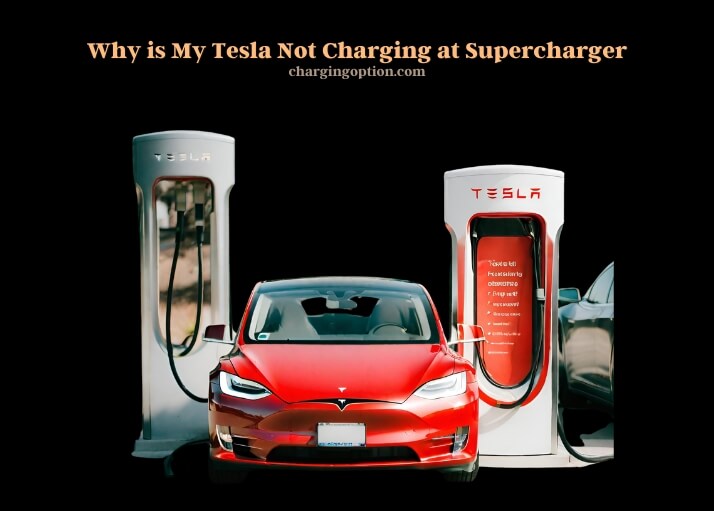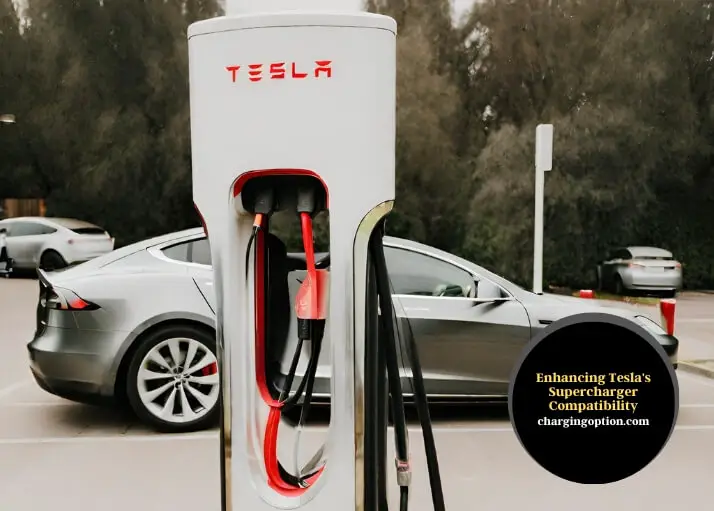There are several reasons why your Tesla might not be charging at a Supercharger. These can range from technical issues with the vehicle itself to external factors affecting the charging infrastructure.
Tesla vehicles are renowned for their cutting-edge technology and the convenience of their Supercharger network, designed to provide rapid charging in strategic locations. However, encountering a charging issue can be perplexing for Tesla owners. The root causes are diverse, including software glitches that may require a simple system reboot or updates, to more complex issues like hardware malfunctions within the charging port or the Supercharger station itself.
Environmental factors also play a significant role; extreme temperatures can affect battery performance and charging capability, while Supercharger availability might be impacted by network congestion or maintenance activities.
Ensuring that your Tesla account is in good standing is crucial, as access to Supercharging can be restricted due to unpaid service fees or other account-related issues. These potential hurdles is essential for Tesla owners, providing them with the knowledge to address or prevent charging issues and enhance their electric vehicle experience.

Troubleshooting Tesla Charging Glitches
Owners often face challenges with their Teslas not charging at Supercharger stations, which can be attributed to a variety of factors. Software glitches are a frequent culprit, where minor bugs or outdated firmware hinder the charging process.
Hardware malfunctions, including issues with the charging port or the Supercharger cable, can prevent a successful connection. Regular inspections and maintenance are vital to ensure the charging port and cable are in optimal condition, free from physical damage or wear and tear.
Ensuring your Tesla’s software is up to date is crucial for maintaining charging compatibility and efficiency. Tesla frequently releases updates to improve functionality and fix known issues. Ignoring these updates can lead to compatibility problems with Supercharger stations. Regularly checking for and installing software updates can mitigate many of the common charging issues Tesla owners face.
Step-by-Step Charging Issue Resolution
Addressing charging issues at a Supercharger station involves a systematic approach to troubleshooting. Initially, checking the Tesla’s dashboard for alerts can provide immediate insights into the problem. A common issue is an improper connection between the car and the charging cable. Ensuring a secure and correct connection might resolve the issue without further steps.
If the initial check doesn’t solve the problem, rebooting the vehicle’s system can often reset any minor software glitches that may be preventing charging. This reboot process involves turning off the car and restarting it after a short wait, a simple yet effective method to resolve many electronic issues.
Supercharger Network Dynamics
The availability of Superchargers and network congestion significantly impacts charging capabilities. During peak hours, high demand at Supercharger stations can lead to slower charging speeds or, in some cases, an inability to charge at all. Planning your charging sessions during off-peak hours can enhance your charging experience.
Supercharger Station Congestion
| Time of Day | Average Wait Time | Charging Speed Reduction |
| Peak Hours | 15-30 minutes | 20-40% |
| Off-Peak | Minimal | None |
Enhancing Tesla’s Supercharger Compatibility
Upgrading your Tesla can significantly improve its Supercharger compatibility and charging efficiency. Options include battery upgrades, which can increase charging capacity and speed, and software enhancements that ensure your vehicle’s charging system is optimized for the latest Supercharger technology.
Aftermarket modifications, though less common, can also offer improvements in charging efficiency but should be approached with caution to avoid voiding warranties.

Consistent Supercharging Through Preventative Measures
Preventative maintenance is key to ensuring your Tesla charges effectively at Supercharger stations. This includes regular vehicle check-ups, battery health monitoring, and adhering to a schedule for software updates. Keeping your Tesla in top condition minimizes the risk of charging issues.
FAQs
Is Your Tesla Account in Good Standing?
One overlooked reason why a Tesla might not charge at a Supercharger is the status of the owner’s Tesla account. If there are outstanding payments or if the account is not in good standing, Tesla may restrict access to Supercharger services.
This is a protective measure to ensure that services are only available to users who are up to date with their payments. Owners should check their account status through the Tesla app or website to ensure there are no outstanding issues that could be preventing charging.
Impact of Extreme Weather on Charging
Extreme weather conditions can significantly impact the ability of a Tesla to charge at a Supercharger station. In very cold temperatures, for instance, the battery’s chemical reactions slow down, reducing its ability to accept a charge.
Conversely, in extremely hot conditions, the car may limit charging speed to protect the battery’s health. Owners experiencing charging issues in severe weather should consider preconditioning their battery before arrival or waiting for the battery to reach a more moderate temperature.
Compatibility Issues with Older Tesla Models
Owners of older Tesla models might face compatibility issues at newer Supercharger stations. As Tesla’s technology evolves, newer Superchargers are designed to accommodate the latest advancements in charging speed and efficiency.
Older models, which were not designed with these advancements in mind, may not charge as expected or at all at some newer stations. It’s advisable for owners of older Teslas to research compatible Supercharger stations or consider hardware upgrades if consistent issues arise.
Supercharger Station Maintenance and Downtime
Occasionally, Supercharger stations undergo maintenance or experience unexpected downtime, which can prevent any Tesla from charging. Tesla usually notifies users of planned maintenance through the Tesla app, but sudden issues can arise without warning. Checking the app for station availability or looking for nearby alternatives can help mitigate this inconvenience.
Incorrect Charging Mode Selection
Tesla drivers might inadvertently select the wrong charging mode, leading to charging issues at Supercharger stations. The vehicle’s charging settings can affect how it interacts with different types of chargers, including Superchargers.
Ensuring that the car is set to the appropriate charging mode before plugging in can prevent these issues. The Tesla user manual and in-car touchscreen provide guidance on selecting the correct mode for Supercharging.
Use of Third-Party Charging Adapters
While Tesla provides adapters for various charging scenarios, the use of non-Tesla or third-party charging adapters at Supercharger stations can lead to charging failures. These adapters may not meet Tesla’s specifications for charging, resulting in compatibility issues or even damage to the vehicle’s charging system. To ensure a smooth charging experience, it’s recommended to use only Tesla-provided adapters and cables at Supercharger stations.
Summary
Tesla owners can face various challenges when charging at Supercharger stations, from software glitches and hardware malfunctions to network congestion. By adopting a proactive approach to maintenance, staying updated with the latest software, and understanding the dynamics of Supercharger networks, Tesla owners can significantly reduce the likelihood of charging issues. Regular upgrades and adherence to preventative measures ensure a smooth and efficient charging experience at Supercharger stations.
